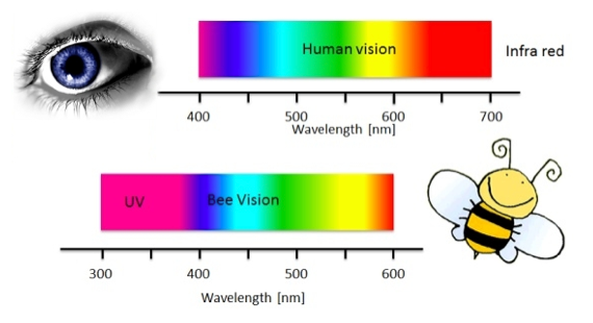Although it’s known that flowers communicate with pollinators by sending out electric signals, just how bees detects these fields has been a mystery – until now.
Using a laser to measure vibrations, researchers found that both the bees’ antenna and hairs deflect in response to an electric field, but the hairs move more rapidly and with overall greater displacements.
Researchers then looked at the bees’ nervous system, finding that only the hairs alerted the bee’s nervous system to this signal.
The findings, published in the international journal Proceedings of National Academy of Sciences (PNAS) today, suggest that electroreception in insects may be widespread.
Electroreception may arise from the bees’ hairs being lightweight and stiff, properties that confer a rigid, lever-like motion similar to acoustically sensitive spider hairs and mosquito antennae.
Dr Gregory Sutton, a Research Fellow in the University of Bristol’s School of Biological Sciences, led the research. He said: “We were excited to discover that bees’ tiny hairs dance in response to electric fields, like when humans hold a balloon to their hair. A lot of insects have similar body hairs, which leads to the possibility that many members the insect world may be equally sensitive to small electric fields.”
The discovery of such electric detection has opened up a whole new understanding of insect perception and flower communication. Dr. Heather Whitney, a co-author of the study commented: “This novel communication channel reveals how flowers can potentially inform their pollinators about the honest status of their precious nectar and pollen reserves”. Professor Robert said: “the last thing a flower wants is to attract a bee and then fail to provide nectar; a lesson in honest advertising since bees are good learners and would soon lose interest in such unrewarding flower”.

Tiny, vibrating hairs may explain how bumblebees sense and interpret the signals transmitted by flowers, according to a study by researchers at the University of Bristol.
Although it’s known that flowers communicate with pollinators by sending out electric signals, just how bees detects these fields has been a mystery – until now.
Using a laser to measure vibrations, researchers found that both the bees’ antenna and hairs deflect in response to an electric field, but the hairs move more rapidly and with overall greater displacements.
Research into these relationships has revealed the co-evolution of flowers and their pollinators, and has led to the unravelling of this important network which keeps our planet green.
